If you are looking for a game to build your own kingdom and wage war against other players, you might be wondering whether to choose Call of Dragons or Rise of Kingdoms.
These two games have many similarities, but also some differences that could affect your gaming experience.
In this article, we will compare and contrast these two games and help you decide which one suits your preferences better.
I have been playing Rise of Kingdoms for a long time, since early 2019. I have witnessed many changes and updates in the game, such as the introduction of Kingdom vs Kingdom, Ark of Osiris, the migration system, and new commanders. Rise of Kingdoms is a well-established game that has set the standard for the kingdom-builder genre.
Call of Dragons has a large and active community, diverse gameplay modes, and rich historical content.
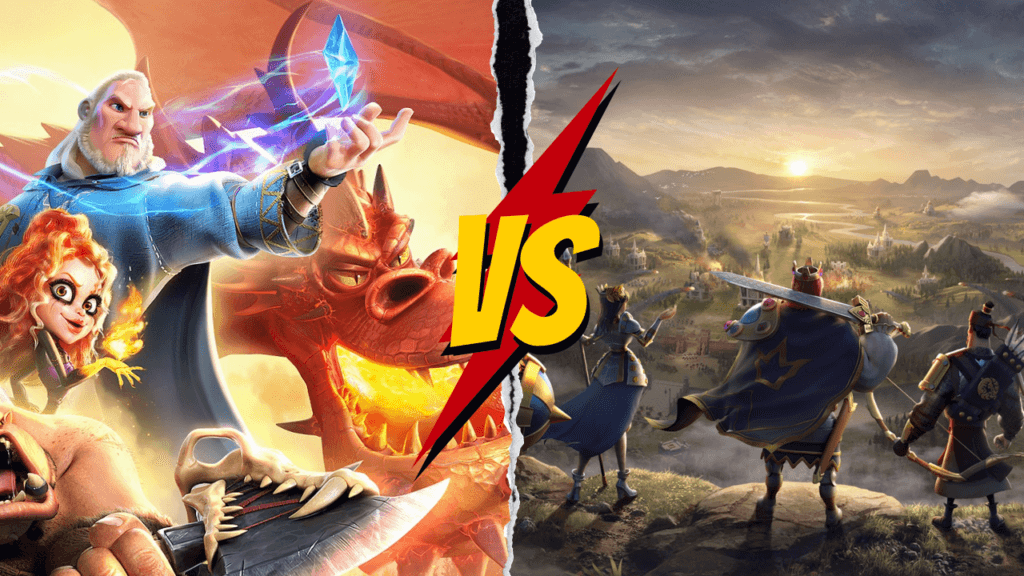
The Similarities
The structures and research systems in both of these games are almost identical.
The only difference is a new troop training building, exclusively for advanced units like Celestials, Eagles, and Wyverns.
Everything else is just renamed.
As far as troop training goes, the system is mostly unchanged, except for siege units, which have their own building and queue.
In Call of Dragons, tier 1 cavalry is not actually cavalry, but rather transport units that are used for gathering.
I really like this change, especially in the late game when you don’t need gathering units any more.
Training siege units in Rise of Kingdoms always felt like a big waste of time and resources.
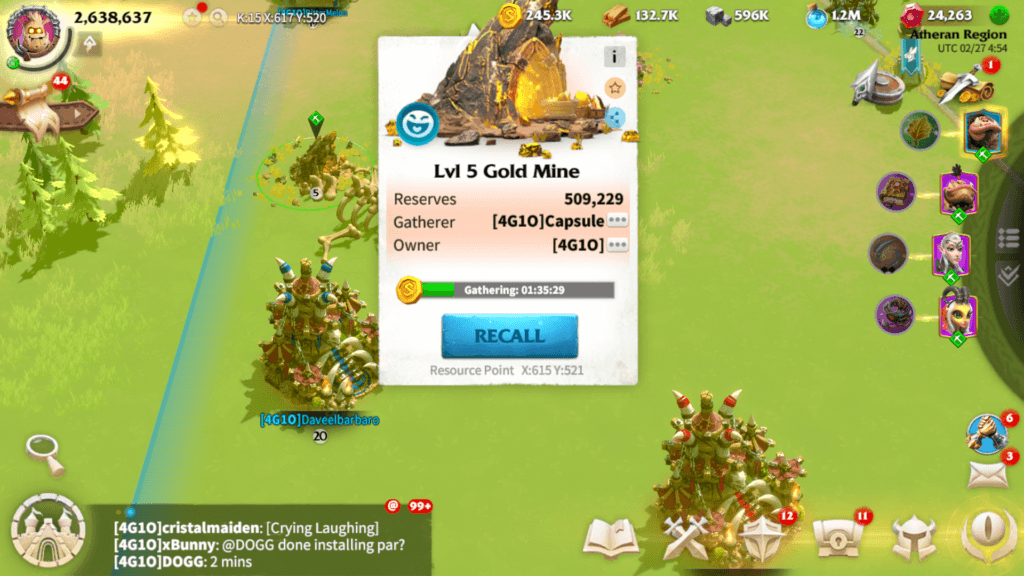
The research system is also just a re-skin, with a few added technologies. They have included two research queues though, which I think is a great idea – it means you can work on those long research projects lasting 20, 30, or 50+ days, while still being able to work on other tech at the same time.
Gathering resources in Call of Dragons is similar to what you’d do in Rise of Kingdoms – only this time, the resources are gold, wood, ore, and mana instead of food, wood, stone, and gold.
Darklings are just a re-skinned version of barbarians. You’ll find three types of Darklings in Call of Dragons: patrols, creatures, and guards. Patrols are good for leveling up heroes, creatures for leveling up artifacts, and guards for the equivalent of Barbarian Camps.
F2P and P2W
As I began my journey in Rise of Kingdoms, I found it to be a rather frustrating experience that heavily relied on the strongest players.
If you unlock the tier 5 units before even the first Kingdom vs. Kingdom event, It will put an immense amount of pressure on you to be available 24/7, often resulting in days of arduous rallying and garrisoning.
However, despite your best efforts, whenever you are away from the game our enemies would overtake us with ease.
The Call of Dragons is different; it focuses more on the open field. To achieve victory, you must take and command the field, shifting the emphasis from individual players to entire teams.
This means everyone’s contribution is valued more, making the game more rewarding for the whole team.
In Call of Dragons, defending a flag is a bit different than in Rise of Kingdoms. To protect a flag, you must push back the enemies past a tower and hold the line there. To fully defend it, you’ll need to send in both engineers and regular infantry troops to knock out each tower.
This is similar to the way you take down holy sites in the KvK3 Light and Darkness event. It’s a great way to get more players involved in the game, and it takes the pressure off of a few players who might have been doing it all on their own in other titles.
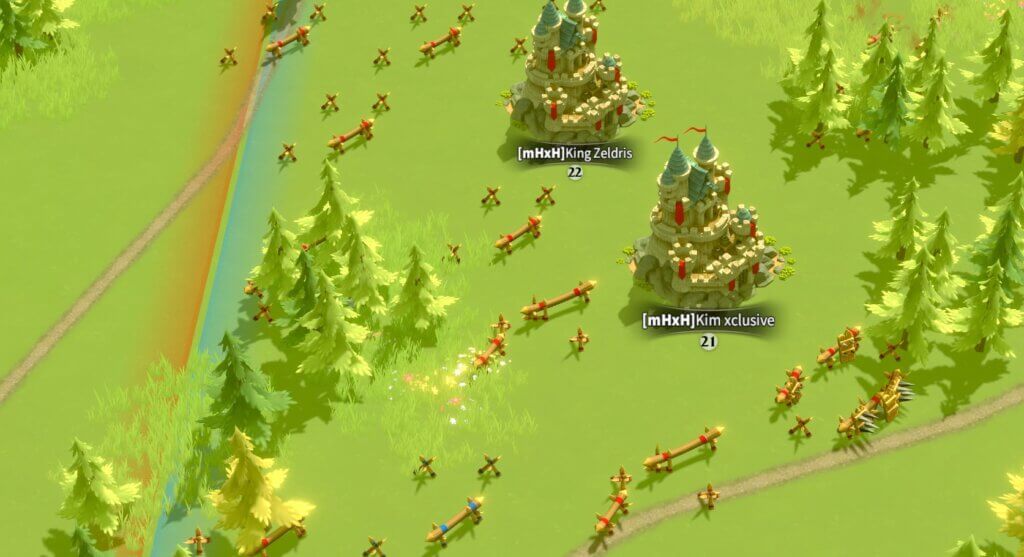
The Importance of Alliance
Are you looking to jump from one alliance to another during a war? In Rise of Kingdoms, you can switch allegiances quickly and easily, allowing you to move your city just as quickly.
However, in Call of Dragons, things are a bit different. If you choose to leave your former alliance and join a new one, you won’t be able to teleport to new territory for a set amount of time.
Say, for example, that you’re Hall level 21, the wait time you must endure before you can relocate is 8 hours. The higher your hall level, the longer you will have to wait.
This is done to ensure that the game remains balanced and fair, as well as to prevent higher-level players from teleporting in and disrupting battles. Though this is a long wait time, it does serve its purpose.
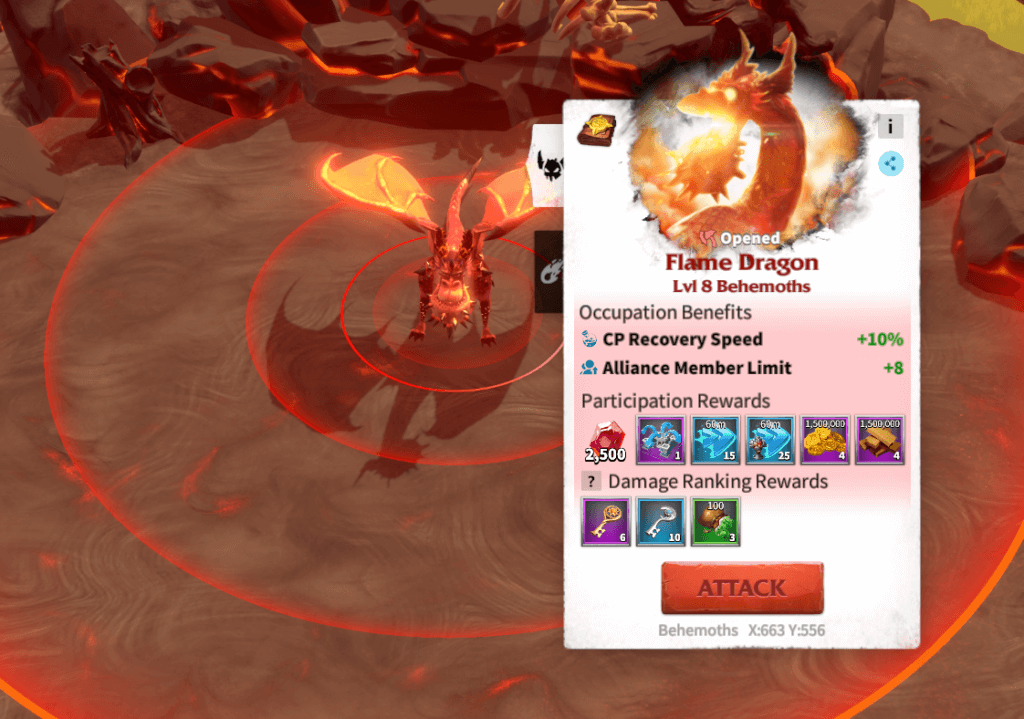
Behemoths
Behemoths bring a new twist to open-field clashes. In Rise of Kingdoms, your goal is to conquer holy sites which gives you a bonus. In Call of Dragons, Behemoths have taken their place.
When you manage to defeat these, they can be summoned in battle and enhanced with better skills and more strength, making them harder to beat.
This added dynamic is something I truly appreciate in Call of Dragons.
Also, you can set up multiple garrison combinations on your wall. The higher the level of your wall, the more options you have, up to five different hero combinations.
If your main garrison combo is deployed in the field, then the first reserve will defend the wall. And if you use the second hero combo in the field, the third one will follow, and so on.
This is a great improvement to the single combination available in Rise of Kingdoms.
Hospitals & Healing Mechanism
In Call of Dragons hospitals have no limits – you can send as many troops there as you desire.
On the other hand, in Rise of Kingdoms, once your hospital is full up, any severely wounded troops after that are lost.
In Call of Dragons, injured troops can keep going to the hospital, so they receive the care they need. If a city is attacked while you’re offline, you’ll only lose a maximum of 10% of your troops, no matter how often it’s raided.
Because of this, it’s incredibly difficult to get wiped out in Call of Dragons.
The city of the defender won’t lose any more troops until they log in and gather their healthy troops once again, increasing their numbers by 10%. Plus, all the resources remain available besides what they keep in their storehouse.
Unfortunately, the downside of attacking a city is that 50% of the troops you rally or send to the legion may die.
All things considered, attacking a city may not be worth the risk.
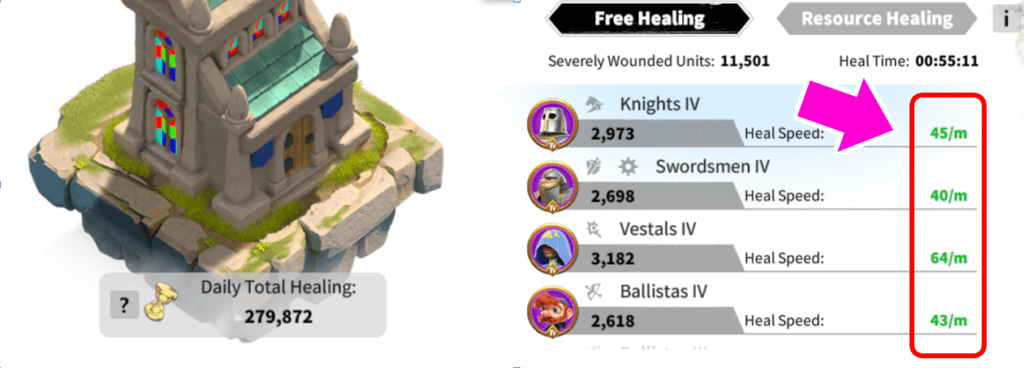
Healing doesn’t always have to be a struggle; you have two options. You can use free daily healing or resource healing – this is decided by the level of your hospitals, the policies you’ve implemented, and the total number of troops you have.
Plus, you can purchase medical supply tokens from the ![]() Merits Store and instantly heal a certain number of units. Merits are acquired through Player vs Player combat.
Merits Store and instantly heal a certain number of units. Merits are acquired through Player vs Player combat.
With 350,000 soldiers under my command and a daily hospital healing rate of around 330,000, my maximum army size is currently at 60,000 troops.
However, compared to the millions of troops allowed in Rise of Kingdoms, this is a whole lot less of a problem than I anticipated.
I can see why the developers opted for this approach. It evens the playing field between high spenders, low spenders, and F2P players, as big whales can no longer engage in non-stop battles, and everyone eventually has to confront the same speedup, resource, or hospital restrictions.
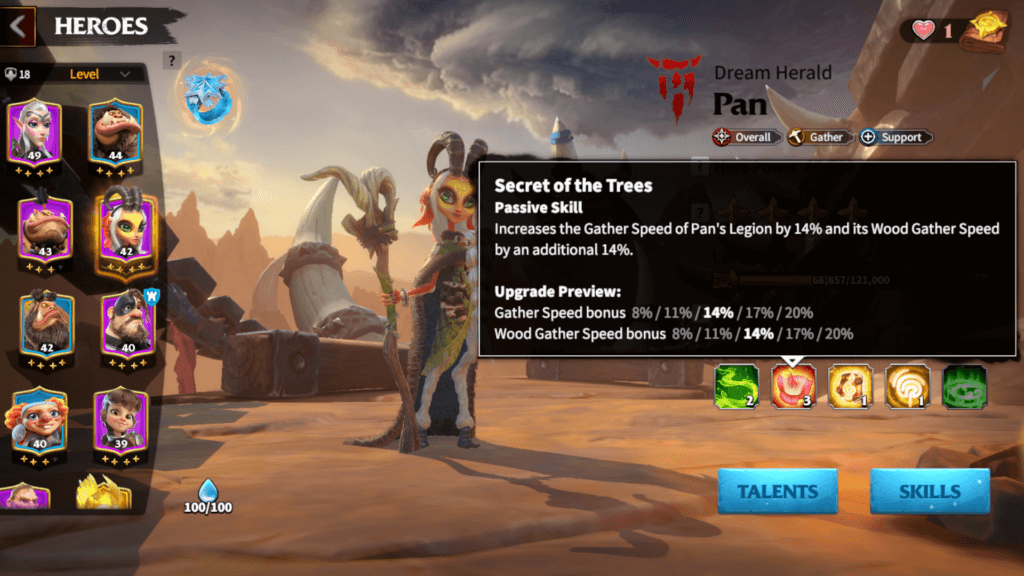
Heroes
Every season of Call of Dragons starts with a reset for the levels of your Heroes.
Although their star ratings and skill levels remain the same, their level and talent trees are reverted to the beginning.
This forces players to truly grind and make their heroes as strong as possible. The effort you put in is then rewarded, as your heroes have a stamina limit for how many times they can attack before needing to regenerate.
All these features come together to incentivize dedicated players and create an enjoyable experience.
When you battle other players in an open field in Rise of Kingdoms, your hero will lose 10 ???? stamina upon the first attack. After that, you can fight as many legions as you like without further stamina loss. However, every time you start or join a rally, 10 additional stamina will be removed, and if you’re destroying enemy buildings, your stamina will continually reduce.
Long wars can be particularly draining, as you can experience stamina fatigue if you join numerous rallies. A great way to manage this is to join rallies with heroes that you don’t usually use, so you don’t consume stamina on your primary ones.
Big spenders, however, have the advantage of having most of their available top tier heroes already maxed out, meaning that even if they did experience stamina loss, they would still have a huge head start.
Call of Dragons’ system prevents gamers from launching unending assaults against anyone they wish.
In order to be successful and not squander precious stamina fighting low-level players, they have to strategize and target more formidable enemies.
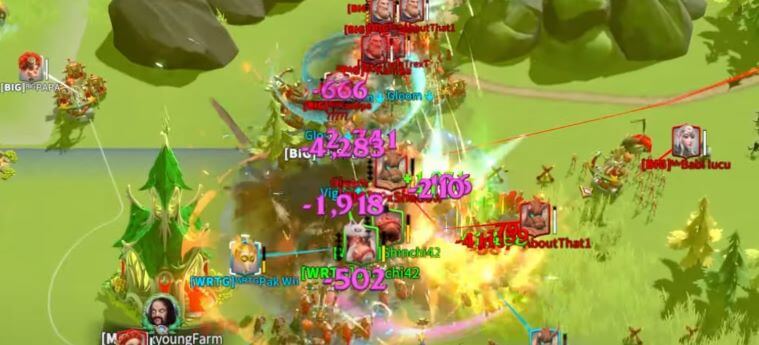
Fighting
In Call of Dragons, the outside battles can be even more thrilling.
Magic troops and archers units can fire from long range, while the flying units can soar over the hills and rivers.
The land has many levels, enabling you to fight from higher spots and hit the troops marching to reach you. You can also construct barricades to hinder the enemy progress, giving the game a new level of strategy and making it much more enjoyable.
On the other hand, a lot of battles in Rise of Kingdoms were just mayhem and then a constant round of troops marching to battle again, with no further tactical thought.
Unfortunately, the game does not allow for garrisoning or rallying at passes or cities as you can in Rise of Kingdoms.
To recreate this mechanic in Call of Dragons, I suggest limited towers be created which can be converted into garrison towers and placed at strategic locations. With this addition, the game will become more enjoyable and engaging for all players.
One of the things I love about the Open Field Battles in Call of Dragons is that the builders around their towers are never safe from attack.
In Rise of Kingdoms, in order to prevent a tower from being built, you have to rally forces to attack the garrison connected to it. While you still need to send forces to destroy the tower in Call of Dragons, you can slow down its build time considerably by eliminating all the armies building it, which can take up to a full day.
Even without any engineers in the area, the towers still build at a rate of one durability per second.
Conclusion
Remember that while these two games are both from the same developer, they are also in competition with each other.
Is Rise of Kingdoms doomed to fail? Not necessarily – both games have their own unique pros and cons. Rise of Kingdoms is a great historical game, and when I first started playing I was researching different commanders and their famed histories. This familiarity made me feel comfortable with the game quickly. I also love all the rallying and garrisoning that you get to do to hold your positions.
All in all, Rise of Kingdoms is a lot of fun!
Call of Dragons is a unique world set in a fantasy land with humans, elves and orcs.
Players can engage in heated battles of tactics, with different levels of terrain and strategic obstacles. The game is tailored to do its best to be a fair and balanced experience, with generous F2P-friendly offerings. Players can expect more great features in the future, and many are happily awaiting the global release.
Personally, I have accomplished what I wanted with Rise of Kingdoms and am looking forward to Call of Dragons. It appears that Legou Games have developed this game to compete with other titles such as Infinity Kingdom rather than Rise of Kingdoms. Exciting times are ahead.

